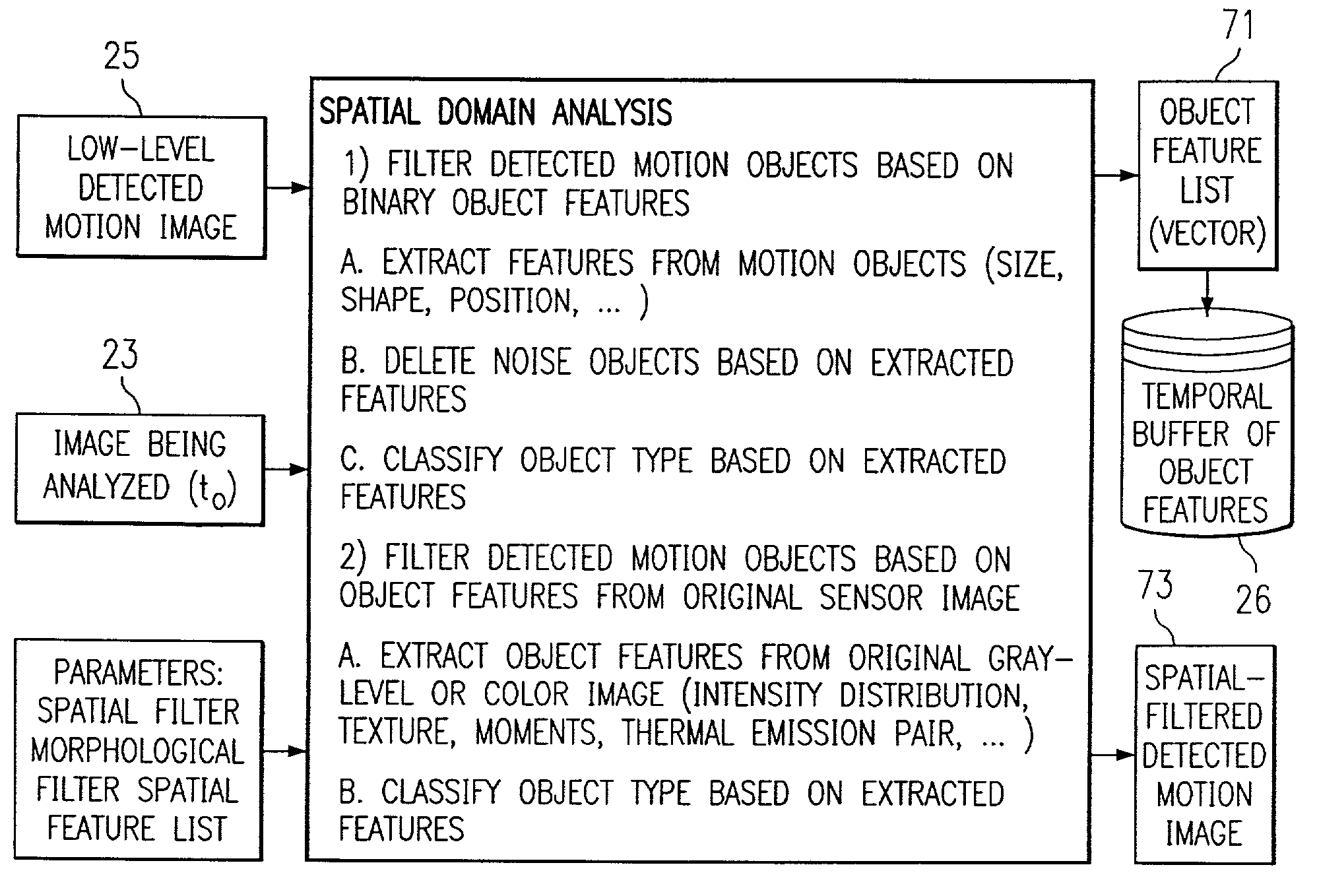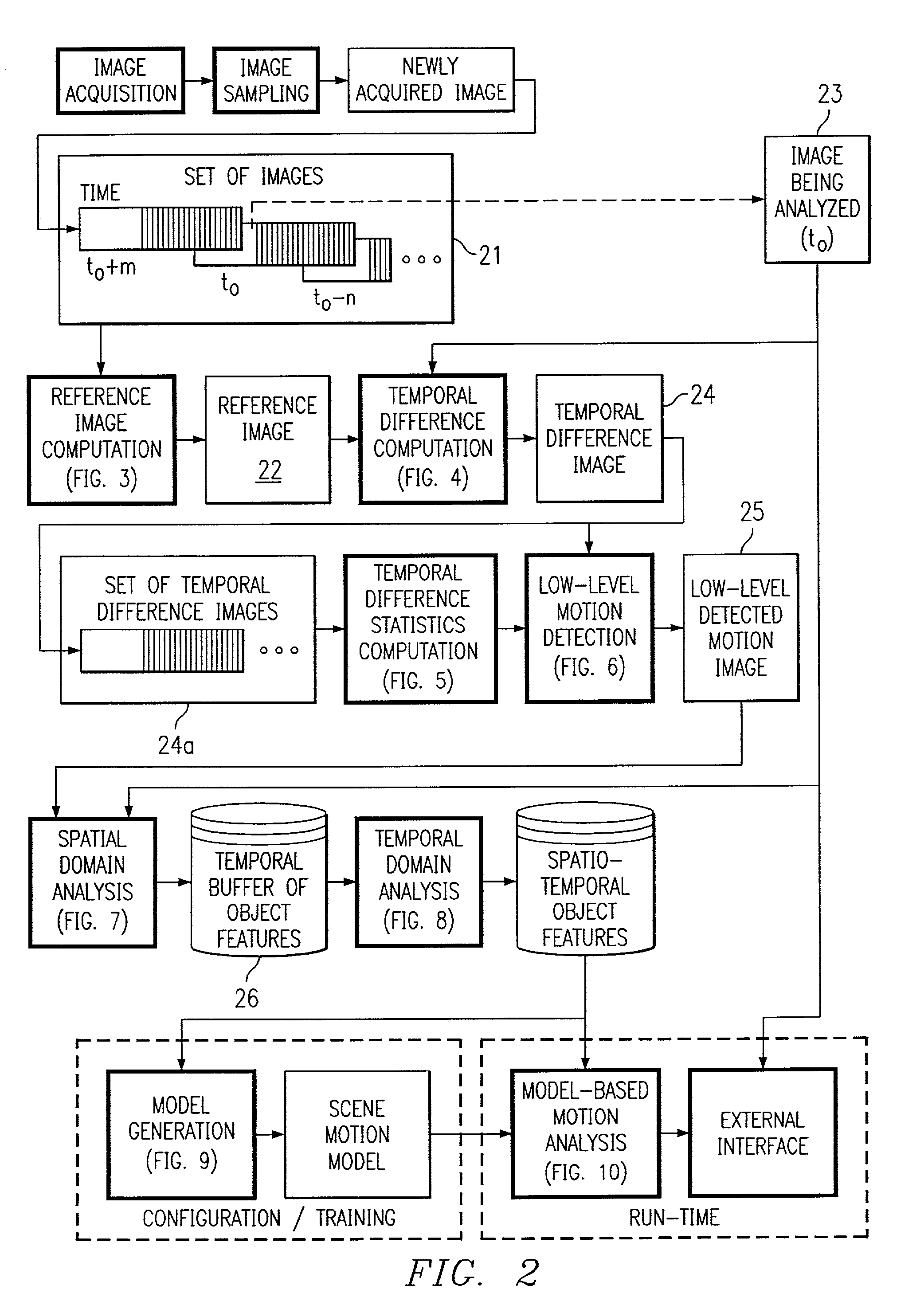Model-based incident detection system with motion classification
- Summary
- Abstract
- Description
- Claims
- Application Information
AI Technical Summary
Benefits of technology
Problems solved by technology
Method used
Image
Examples
Embodiment Construction
[0021]Reference Images for Incident Detection
[0022]U.S. patent Ser. No. 08 / 968,916, entitled “Methods and Apparatus for Traffic Incident Detection”, describes various apparatus and methods for substantially automatic and real-time location of roadways, as well as location and characterization of vehicular traffic and traffic-related incidents. One method described therein is a method of identifying vehicles in traffic, using infra-red images and detecting “thermal emission pairs”, which are characteristic of vehicles.
[0023]Many of the concepts described in U.S. patent Ser. No. 08 / 968,916 can be applied to incident detection that is not necessarily related to vehicular traffic. Specifically, various concepts described therein related to motion detection can be applied to any type of surveillance.
[0024]Incidents detectable using various motion detection algorithms include the appearance (or disappearance) of objects in an area of interest. Because of the substantially real-time warnin...
PUM
 Login to view more
Login to view more Abstract
Description
Claims
Application Information
 Login to view more
Login to view more - R&D Engineer
- R&D Manager
- IP Professional
- Industry Leading Data Capabilities
- Powerful AI technology
- Patent DNA Extraction
Browse by: Latest US Patents, China's latest patents, Technical Efficacy Thesaurus, Application Domain, Technology Topic.
© 2024 PatSnap. All rights reserved.Legal|Privacy policy|Modern Slavery Act Transparency Statement|Sitemap



